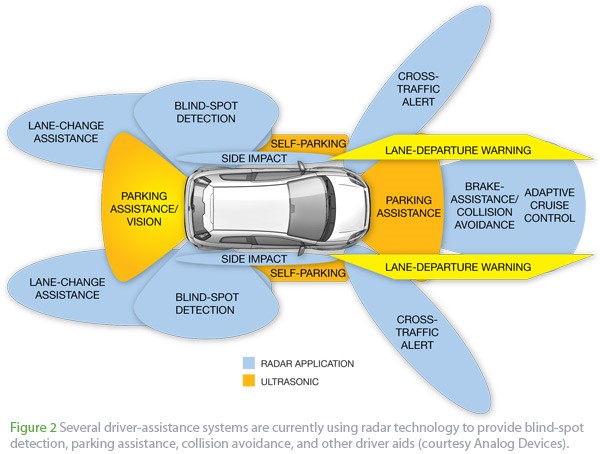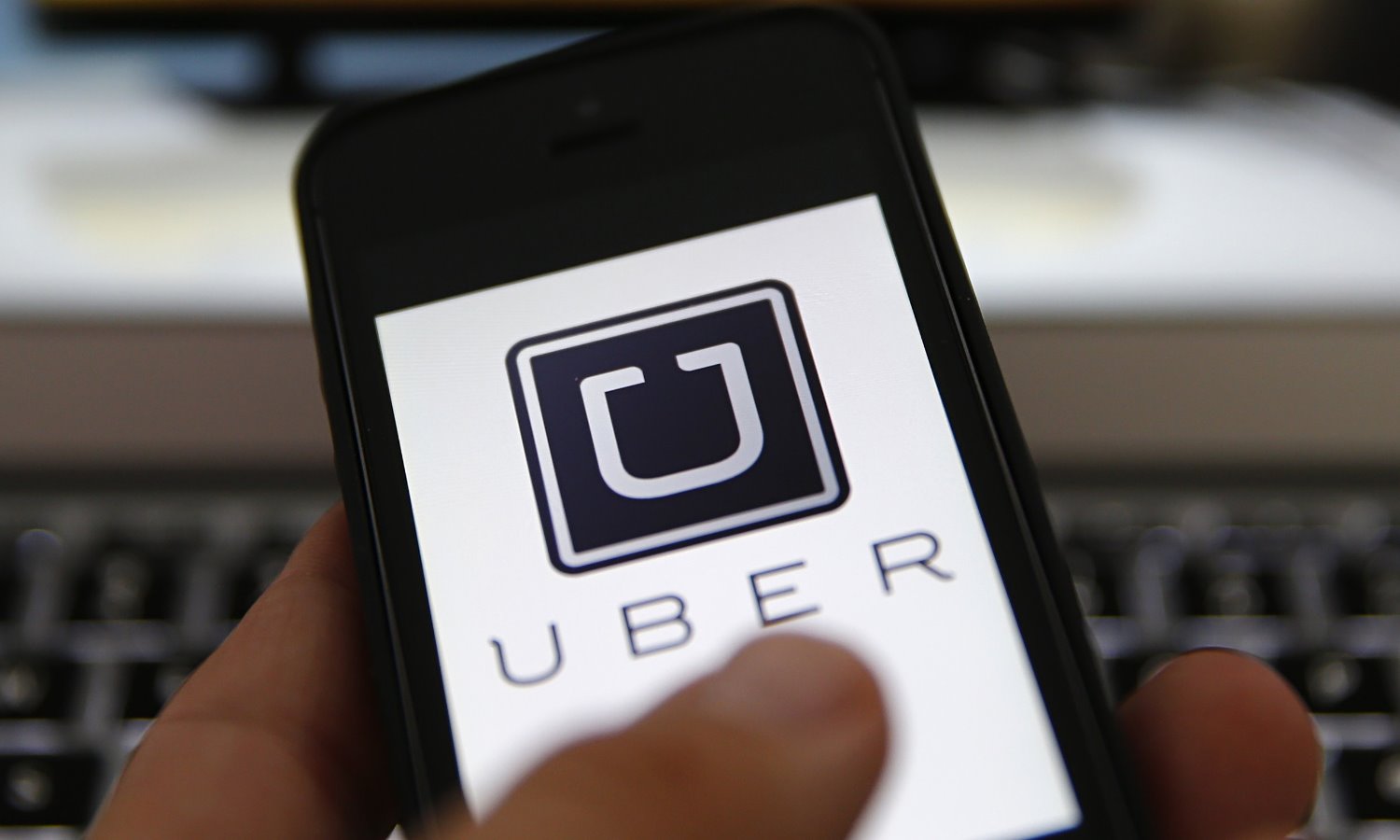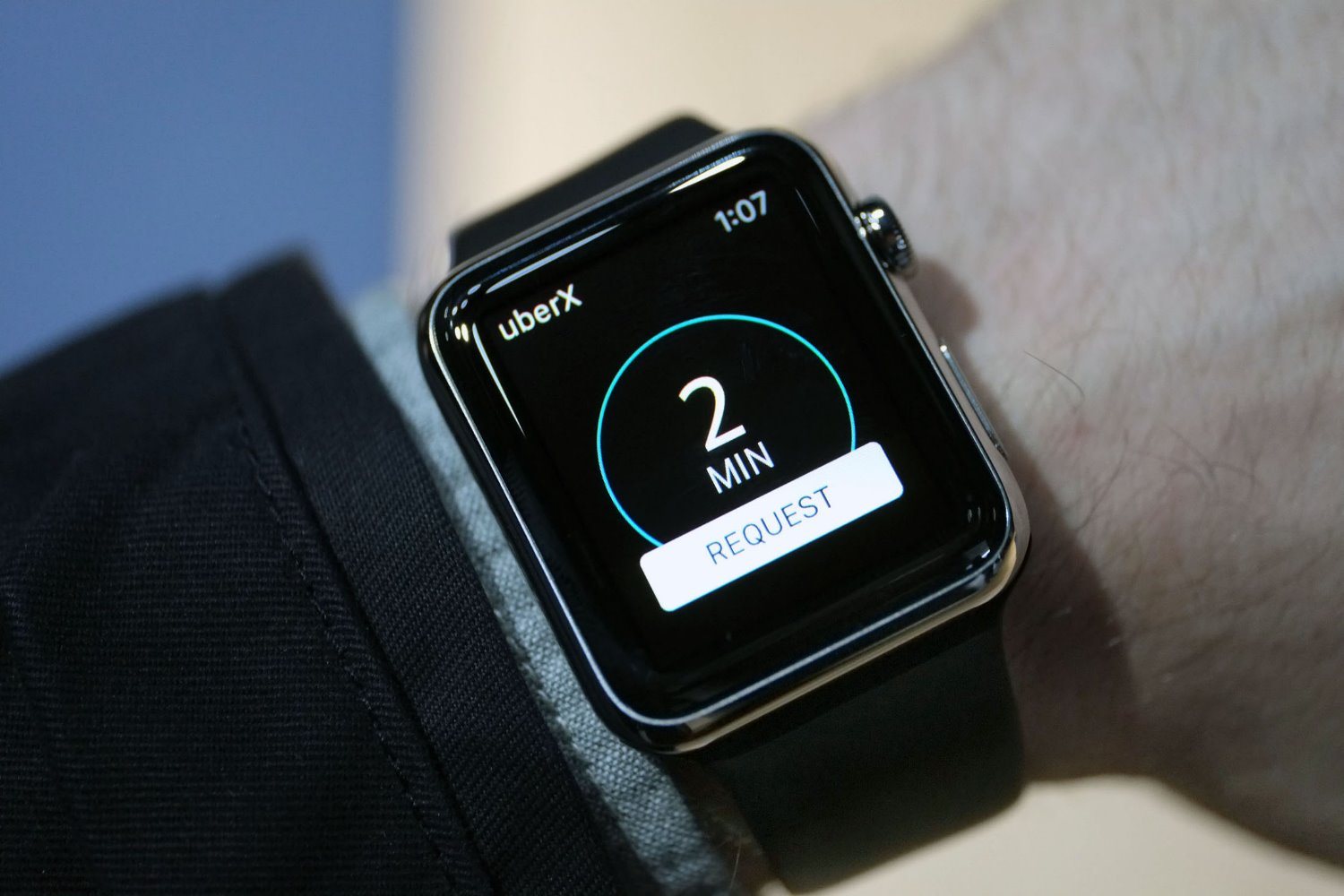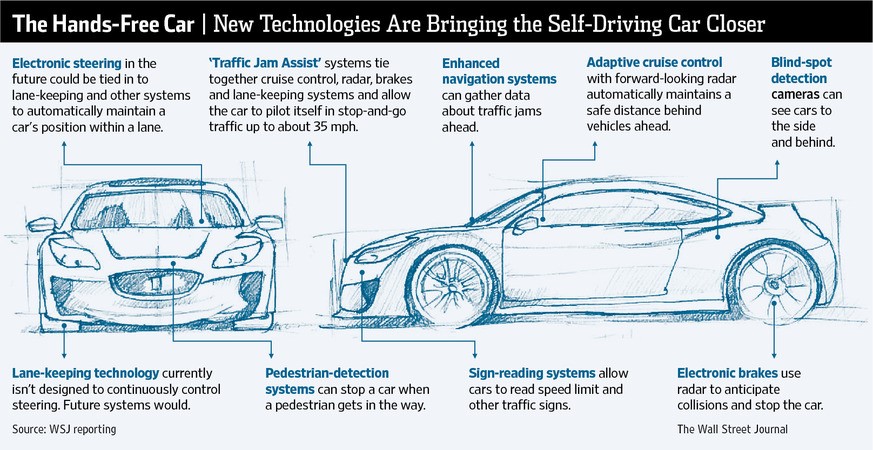Your kids will probably never need to own a car
 |
| Autonomous vehicle technology is almost ready for prime time |
Connected vehicle technology may never become mandatory in American cars, as the Department of Transportation recently suggested it might, because it does have to be. Autonomous vehicles are getting so good that soon they will be able to drive totally independent from any communication from other vehicles. Combine autonomous vehicle technology with Uber technology and you get the first step to a world without car-ownership.
Of course, right now cars are neither connected nor autonomous, and the vast majority of Americans still commute to work by driving alone — a cultural habit that will be hard to replace. But we're not so far away from this future that it's too early to start considering what it might look like. As Matt Yglesias wrote at Slate in August, Google, the leaders in autonomous car technology, must have had some vision in mind to shell out $258 million for the car-slash-ridesharing service Uber: "ubiquitous taxis — summoned via smartphone or weird glasses — that are so cheap they make car ownership obsolete."
Think about this world of shared autonomous vehicles for a moment. You wake up and get ready for work, and a few minutes before it's time to leave you press a button and order an SAV. The car has been strategically positioned to wait in high-demand areas, so you don't have to wait long. You might share the ride with a couple travelers just as you share an elevator, or perhaps pay a premium to ride alone. Either way, you clear your inbox or read the paper during the commute, which is safer and more reliable than it used to be.
[adinserter name="GOOGLE AD"]"It's a game-changer," says autonomous car researcher Alain L. Kornhauser of Princeton University. "What I think is going to happen is that nobody will own a car. … If you can get [mobility] by the drink, you won't buy the bottle."
The problem with buying the drink today, says Kornhauser, is that the labor cost of on-demand taxi service is enormous. As a result, we buy the bottle just in case we want a drink. Driverless cars change the whole equation. Right now less than 17 percent of U.S. household vehicles are in use at a time. If even a fraction of those unused cars were replaced by SAVs, the car-ownership reduction could be huge. Especially when you consider that a quarter of car-share members already give up their cars — with another quarter opting not to buy one.
Civil engineer Kara M. Kockelman of the University of Texas at Austin recently modeled the potential ownership change with grad student Daniel Fagnant. Using Austin's density and population as their baseline, they simulated an average weekday of travel in a 10-by-10 mile zone of the city. They made the conservative assumption that only 5 percent of all trips would made by shared autonomous vehicles. The rest would drive their own cars as usual.
 |
| Your kids will just order a self-driving car (anywhere from a econobox to a Mercedes) to come pick them up from their iPhone, or from their Apple Watch |
 |
The results offer an enticing glimpse of a world without car-ownership. Each SAV in the Austin model replaced about 11 conventional household vehicles. The roughly 20,000 people who made up this shared network, formerly owners of roughly as many cars, were now served by a mere 1,700 SAVs. Travelers waited an average of only 20 seconds for their ride to arrive, and you could literally count the number who waited more than 10 minutes on one hand (three). That's to say nothing of personal savings in terms of cost (insurance, parking, gas) and time.
"Even when we doubled or quadrupled or halved or quartered that trip-making, we didn't have big changes in our key variables," says Kockelman. "This replacement rate, this eleven-to-one, those things were very stable."
Kockelman is quick to point out the caveats. The biggest is that for all the savings in private car-ownership, vehicle-miles traveled doesn't go down in the Austin model. In fact, it goes up about 10 percent. That's because not only are SAVs making all the trips people used to make on their own, but they're repositioning themselves in between trips to reduce wait times (see below). The additional wear also means manufacturers produce about the same number of cars, too, though each new fleet is no doubt a bit smaller and cleaner than the last.
"So total miles-traveled is not going down — it's actually going up," she says. "Instead of driving 100,000 over 10 years, they're driving 100,000 miles every year."
Skeptics have also charged that autonomous cars will disrupt any city-based travel models, since people freed from the need to drive will move even farther away from the core. That might be true for people who own their autonomous cars, says University of Minnesota transport scholar David Levinson, but a strong sharing system could promote the opposite movement. "If you're paying for the car by the minute, then you're not going to want to move farther out," says Levinson. "You're going to want to move closer in."
[adinserter name="GOOGLE AD"]Levinson says SAV service that offers convenient on-demand trips gives people a much greater incentive to rely on that system — and a much smaller incentive to take the unnecessary trips often made by private cars. It's a recipe for the type of multi-modal lifestyle change only possible right now in places like Manhattan. Transit for essential daily trips, cabs (or other alternatives based on the type of trip) for the rest.
That raises perhaps the biggest question for cities to ponder between today and a shared autonomous tomorrow: Could an SAV network perpetuate car travel so much that it eliminates public transportation? For sure, it means a greater reliance on roads and automobiles. But Kornhauser points out that an SAV network also has the potential to enhance transit ridership on existing commuter routes. After all, a convenient ride to and from the station could increase demand enough for transit agencies to run even more trains or buses.
"Because there's such an increased demand in train service, instead of having service every half hour or hour, you have service every 10 minutes, every 5 minutes," he says. "It's a whole new ballgame."
"What I think is going to happen is that nobody will own a car."
At the same time, SAVs might even represent an upgrade to existing transit service in many low-demand corridors. A few SAVs perched outside such neighborhoods might provide the area more cost-efficient and reliable service than a few buses running every half hour or hour. That doesn't solve the problems of funding low-demand transit corridors, but it does reduce the scale of the investment — and it also makes door-to-door trips easier for aging and disabled populations.
 |
| Uber will own a fleet of autonomous vehicles that will be used 24×7 – after they drop you off they will go pickup the next person. You will no longer have to find a parking spot, or pay for one. In fact we may not need parking garages or parking lots in the future. |
The worlds of transit and car-share are already starting to converge. In Portland, Zipcar recently partnered with TriMet, the city's transit agency, to offer riders a new option for the first-and-last mile of their commute. That's a sign the demand for a mobility network free of car ownership is growing even without a driverless element. Cities that fail to start asking questions a shared autonomous future now risk making transport investments that could become irrelevant even before they're completed.
The big market question is when this world will begin to emerge. Levinson subscribes to a timeline in which autonomous cars enter the luxury market in 2020, the technology trickles down into the affordable mid-level range over the next several years, and by 2030 every car on the road is driverless. (Other cars would be banned a decade later.) Since car- and ride-sharing operations tend to rely on smaller cars, that would peg SAV networks closer to 2030 — about 16 years from now.
"It's not that far away anymore," says Levinson. "But 16 years ago was 1998, and Google hadn't been invented. So it's a short time and it's a long time."
